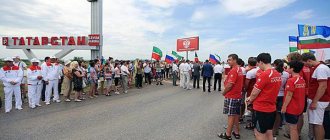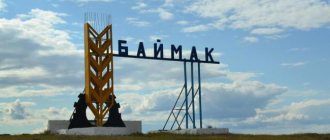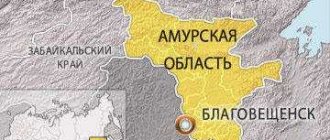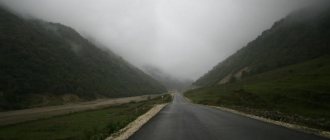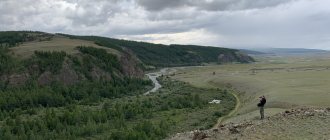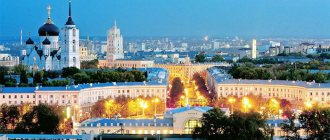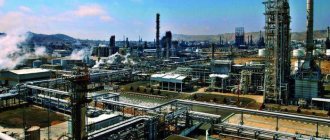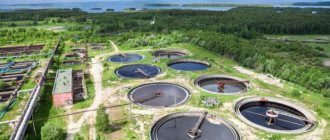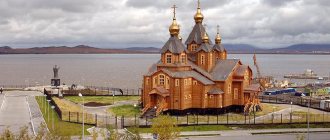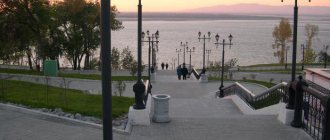Save it for yourselfPrint
Bashkiria, or officially the Republic of Bashkortostan, is located in the southern part of the Ural Mountains, on the border of Europe and Asia. The name comes from the name of the indigenous Bashkir people (Bashkort).
The territory of the republic is located in the basins of the Volga , Ural and Ob . Bashkiria is interesting for its rich and beautiful nature with a wide variety of landscapes, as well as national flavor.
The capital of Bashkiria is the city of Ufa. The largest cities are Ufa (1.124 million people), Sterlitamak, Salavat, Neftekamsk and Oktyabrsky.
Bashkiria borders on the following territories of the Russian Federation:
- with the Republic of Tatarstan in the west,
- with Udmurtia in the northwest,
- in the north - with the Perm Territory and the Sverdlovsk Region,
- with the Chelyabinsk region in the east,
- in the south and southwest - with the Orenburg region.
Geographical characteristics of the Republic of Bashkortostan:
Area 142,947 km² (27th place in Russia). The length from north to south is 550 km, from west to east – 430 km. Population 4,038,151 (2020). The population density is 28.4 people/km², the share of the urban population is 62%.
Statistics, however, say that Russians predominate in the national composition of the population - 36%, followed by Bashkirs - 29%. There are 25% Tatars in the republic, 2.7% Chuvash, 2.6% Mari, etc. In total, representatives of 160 nations live.
There are two official languages on the territory of the republic - Bashkir and Russian. There are many signs in Bashkir, or in both languages.
Story
The republic and its inhabitants were first mentioned in written materials from the 10th century. The numerous mountains of Bashkiria were inhabited by one part of the indigenous people, the other part lived in the free steppes. Their main activities are hunting, cattle breeding and fishing.
In the 12th-14th centuries, the Bashkirs were oppressed by the Tatar-Mongols; after the collapse of the Horde, the very existence of the people was under threat - the people were suppressed and divided. In 1557, a decision was made to join the Russian state. Gradually, the territory of Bashkiria begins to be populated. Several fortresses were founded to protect against enemy raids. Local residents adopted Russian farming experience. In the 18th century, the Southern Urals became the center of the mining industry.
The Bashkirs took an active part in the Peasant War. Their detachment was led by the poet and talented military leader Salavat Yulaev, who was captured by the government and sent into exile after the defeat. He subsequently became a national hero.
With the advent of the Soviets, an autonomous republic was formed. In 1992, due to the collapse of the USSR and the change of government, it was renamed. The beautiful region was named the Republic of Bashkortostan. This is how we know him today. To the question “how old is Bashkiria?” It’s difficult to answer definitively. The republic was formed as an independent region more than 700 years ago. But its birth dates back to the middle of the 15th century - it was then that it was annexed to Russia.
The area of the Republic of Bashkortostan is 5 times or more greater than the area of such countries as:
Equatorial Guinea (28,051 sq. km.), Burundi (27,830 sq. km.), Haiti (27,750 sq. km.), Rwanda (26,338 sq. km.), Macedonia (25,713 sq. km.), Djibouti (23,200 sq. km. .km.), Belize (22966 sq.km.), El Salvador (21041 sq.km.), Israel (20770 sq.km.), Slovenia (20273 sq.km.), Fiji (18274 sq.km.), Kuwait (17,818 sq. km.), Montenegro (13,812 sq. km.), Qatar (11,586 sq. km.), Gambia (11,295 sq. km.), Jamaica (10,991 sq. km.), Kosovo (10,887 sq. km.) km.), Lebanon (10,400 sq. km.), Cyprus (9,251 sq. km.), Brunei (5,765 sq. km.), Samoa (2,831 sq. km.), Luxembourg (2,586 sq. km.), Hong Kong (1104 sq. km.), Singapore (697 sq. km.), Barbados (430 sq. km.), Malta (316 sq. km.), Maldives (298 sq. km.), Liechtenstein (160 sq. km. .).
Bashkiria Square
The republic is located in the southern part of the Ural Mountains, at the border of Europe and Asia. The Perm, Sverdlovsk, Chelyabinsk, and Orenburg regions are located nearby. In the west and north-west it neighbors Tatarstan and Udmurtia, respectively. The exact area of Bashkiria is 143,600 thousand square kilometers (this is 0.8% of the entire territory of Russia).
The capital of the republic is the city of Ufa. Beloretsk, Ishimbay, Kumertau, Neftekamsk, Salavat, Sibay, Sterlitamak are the large cities that Bashkiria can boast of. The language with which its inhabitants communicate is Russian. They also speak their native Bashkir, and in some areas people communicate fluently in Tatar. The population of the republic (according to the 2010 census) is 1,172,287 people. There are about 2 million Bashkirs in the world.
The area of the Republic of Bashkortostan is larger than the area of the following countries:
Greece (131,957 sq. km.), Nicaragua (130,370 sq. km.), North Korea (120,538 sq. km.), Malawi (118,484 sq. km.), Eritrea (117,600 sq. km.), Benin (112,622 sq. km. .km.), Honduras (112090 sq.km.), Liberia (111369 sq.km.), Bulgaria (110879 sq.km.), Cuba (110860 sq.km.), Guatemala (108889 sq.km.), Iceland (103,000 sq. km.), South Korea (99,720 sq. km.), Hungary (93,028 sq. km.), Portugal (92,090 sq. km.), Jordan (89,342 sq. km.), Azerbaijan (86,600 sq. km. .km.), Austria (83871 sq.km.), United Arab Emirates (83600 sq.km.), Czech Republic (78867 sq.km.), Serbia (77474 sq.km.), Panama (75420 sq.km. ).
Weather and climate
The climate of the republic is continental. The weather in Bashkiria is changeable and sometimes unpredictable. The low mountain range does not prevent the penetration of Siberian air masses.
Summer in the republic is warm. The temperature in the steppe zone of the foothills of the Urals rises to 40 degrees. On average, in July the temperature ranges from 16 to 20 °C. The number of sunny days in the capital is around 260. Winter in Bashkiria is quite severe. The negative temperature stays around 15 degrees, but sometimes the thermometer drops to -40 °C. Snowstorms are typical for the steppes, blowing snow away from the elevated areas of the valleys of the Urals. Snow appears in September and lasts until April. The weather in Bashkiria directly depends on the wind; on average, it develops a speed of 3.4-5.2 meters per second.
Nature
Most tourists come to the republic to admire the diversity of its nature. When traveling around Bashkiria, be sure to look into the coniferous and deciduous forests. Noble oaks, light lindens, Norway maples, and sharp firs are located proudly and majestically in them. The area is rich in magnificent flora and diverse fauna - animals characteristic of the taiga live in these forests. Mice, jays, badgers and hedgehogs are only a small part of the animals that may catch the eye of a tourist.
The forest-steppe of Bashkiria is rich in foxes, wolves and hares, and in some places you can find roe deer. The most open areas are inhabited by steppe rodents. Seagulls and ducks settled near the lakes. The steppe area is sparse with trees, there are few plants here, and cereals grow - sheep and feather grass. Local residents include gophers and jerboas. There are many birds of prey - golden eagles, eagles, kites. They can often be seen hovering in the air or sitting on slopes - this is how they observe and look out for prey. The steppe lakes of the Trans-Urals are teeming with birds, and near the rivers you can meet the inhabitants of the neighboring forests.
Mountains of Bashkiria
The main attraction of Bashkortostan is its magnificent mountains. The largest mountain of the Southern Urals is located here - the Yamantau hill with two peaks, from which numerous rivers flow. Another popular mountain is the sacred Iremal, which was strictly forbidden to climb until the 19th century. Mount Premel is the mother of two rivers, by swimming in which you can recharge yourself with remarkable strength for the long year ahead.
There are legends about the appearance of the Yurak-Tau, Kush-Tau, Shah-Tau and Tra-Tau mountains. It is believed that many years ago the arrogant horseman Ashak was in love with the daughter of the old Ural, the beautiful Agidel. He tried to attract the girl's attention, but his feelings were not reciprocated. Ashak then mounted his horse and chased his beloved. Having caught up, he hit her with a whip, which angered old man Ural. He turned his daughter into a fast river, and Ashak could not catch the naughty Agidel - the water flowed through his fingers.
He decided to send a falcon after the girl, but he also failed. Ashak realized everything, tore his own heart out of his chest, and threw it at the feet of his beloved. She touched him, but could not return to human form. Now at the site of the tragedy there are four shihans - Yurak-Tau (heart), Kush-Tau (bird), Shah-Tau (Ashak) and Tra-Tau (mountain of the Bashkir tribe).
Rivers
Rivers, like mountains, are the pride of this beautiful republic. The largest and strongest river in Bashkiria is the Belaya. It flows, meandering through the Cis-Urals and along the western foothills. Its tributaries are the Nugush, Sim, Ufa and Dema rivers. In November, after severe frosts, the rivers quickly freeze. After 5 months they gradually thaw.
In areas of forests and steppes one can count a huge number of lakes of varying sizes. They are wide but shallow, and many of them are overgrown with reeds, cinquefoil and other marsh vegetation. The lakes are different - fresh, salty, but they are all beautiful in their individuality.
Attractions
Since then, few sights have been preserved. Frequent fires destroyed wooden buildings, and very few stone ones were erected. Ufa can boast of only a few architectural monuments of antiquity. Bashkortostan is the homeland of nomads who developed not material, but spiritual culture.
One of the surviving examples of wooden architecture is the Intercession Church (dating from the 19th century) on Mingazheva Street. During Soviet times, the Yondoz cinema was located here; now this building has again become a church building.
Among the stone buildings of the pre-revolutionary era, the Ufa station stands out. Bashkiria in 1888 was united with the metropolis by railway. First, a branch of the Samara-Ufa railway was built. Since 1890, the station building was subordinate to the management of the Samara-Zlatousovskaya Railway, and since 1949 – to the Ufa Railway. Since 2003 it has had a modern name and status. Currently, the station complex of the Ufa station is undergoing major reconstruction.
Also preserved in Ufa:
- House of the Civil Governor (19th century). Now the Ministry of Health of the Republic of Belarus is located in this building.
- The building of the Noble Assembly (erected in 1852) is also an architectural monument. It was transferred to the Ufa Academy of Arts.
- The building of the Provincial Institutions (1839). Now this is a donor point.
- Other attractions.
The oldest building is considered to be the corner one-story house of the mining manufacturer Demidov (on October Revolution Street-57). The house was built in the mid-18th century. After the death of its owner, Ivan Demidov, in 1823 the house was purchased by the Ufa merchant F.S. Safronov. The house is also famous for the fact that commander A.V. Suvorov stayed there in November 1774.
Nature reserves
A large area of Bashkiria is occupied by valuable natural reserves.
- State reserve. It is located on the border of deciduous and birch forests, close to the Trans-Ural steppes. The flora and fauna are very rich; both mammals and large predators live here. The reserve's workers monitor the conservation and breeding of birds and animals, many of which can be found in the Red Book.
- Shulgan-Tash. There are no analogues to this place in the Russian Federation - wild bees are protected and studied on the territory of the reserve. They easily tolerate cold and are resistant to diseases, and their productivity is many times higher. Rare birds are also protected in the reserve.
- Bashkir National Park. Filled with rare species of plants and animals. Tourists have the opportunity to walk along ecological trails (specially designed routes).
Ufa XVII-XVIII centuries
The capital of Bashkiria during this period was a typical small provincial border fortified city. It consisted of:
- fort;
- posada;
- suburban settlement.
The main task of the city was the defense of the southeastern borders of the expanding Russian state. The center of Ufa was the Kremlin, surrounded by a wall, behind which, in the event of an enemy threat, residents of the rest of the city could find refuge.
At first, there were about 300 townspeople, the total number of households was less than 200. The 17th century was significant for the active settlement of the settlement: together with the garrison, the total number of townspeople exceeded one and a half thousand. In addition to military service, the townspeople were engaged in agriculture: animal husbandry, beekeeping, gardening, and growing grain. Among the crafts, leather and blacksmithing flourished (the forges were located on the banks of the Sutoloka).
According to papers, the city of Ufa by the end of the 18th century had grown to 1058 households, 2389 residents lived here, although, according to some historians, there were more than 3000 people in Ufa at that time. Most of the townspeople belonged to commoners, philistines. There were much fewer military men, merchants and nobles.
The entire network of streets in the historical center of Ufa was created by the greatest specialist in the field of Russian urban planning, architect William Geste, who was specially invited from St. Petersburg. He arrived in Ufa in 1819.
Modern Bashkiria
Bashkortostan is one of the most economically stable regions of the Russian Federation. The republic has a developed industry, and the capital is ideal for doing business (according to Forbes ratings). The living wage in Bashkiria is set by the government at 8,691 rubles per capita. For workers - 9205, for pensioners - 7061, for children - 8856.
Grain and industrial crops are grown in the fields, and sheep, horses, and poultry are grown on farms. Wool production and beekeeping are popular. Oil refining, mechanical engineering and metalworking are developed in the republic. Factories in Bashkiria are engaged in woodworking and the production of building materials.
There are 1,644 preschool institutions, 1,587 schools and 10 state universities on the territory of the republic.
Popular hotels in Bashkortostan
What is Bashkortostan famous for besides attractions? There are more than 100 hotels registered in the republic, where about 7,000 tourists can simultaneously stay. Among the most popular hotels in Ufa are:
- Hilton Garden Ufa Riverside;
- Hampton by Hilton;
- hotel complex "Bashkiria";
- "Azimut Hotel Ufa";
- AMAKS City-Hotel;
- Crowne Plaza-Ufa-Congress Hotel;
- "President Hotel" and others.
Considering the question of what Bashkortostan is famous for, one can note over thirty sanatoriums and health institutions located in picturesque places of the republic. The most popular include: “Assy”, “Chekhov”, “Talkas”, “Yangat-Tau”.
All sanatoriums in the republic have different target areas and must be chosen for visiting based on their state of health.
Tourism sector
Tourism is one of the main areas in the life of Bashkiria. It is often called the second Switzerland due to its diversity of natural resources. When planning a trip, rest assured: they can offer you different options for relaxation in sanatoriums and resorts. You can stay at camp sites, comfortable hotels or budget hostels.
The Republic of Bashkortostan offers its guests to take advantage of numerous tourist routes. You can choose from hundreds of summer and winter bus tours, including through the capital and nature reserves. For lovers of horse riding, rafting on catamarans or kayaks, there is also fun. You can book a ski or cycling tour, snowmobile safari, trekking, caving tour or a simple sightseeing walk.
Questions and answers on the borders of Bashkiria
Does Bashkortostan border anywhere with China? Bashkiria (Republic of Bashkortostan) does not border China (does not have a common border)
What foreign countries does Bashkortostan border with? Bashkortostan does not border (has no common border) with any foreign state.
Does the Republic of Bashkortostan have access to the state border? The Republic of Bashkortostan (Bashkiria) does not have access to the Russian state border.
Does Bashkortostan have access to the sea? The Republic of Bashkortostan has no access to the sea.
Where does Bashkiria border on Kazakhstan? Bashkiria (Republic of Bashkortostan) does not border with Kazakhstan (does not have a common border)
Where does Bashkiria border with the Samara, Ulyanovsk, and Kirov regions? The Republic of Bashkortostan (Bashkiria) does not border the Samara, Ulyanovsk, Kirov regions.
With which region of Russia does Bashkiria have the longest border? The longest border is between Bashkiria and the Chelyabinsk region (more than 1330 km).
Where is the border of the Nizhny Novgorod region and Bashkiria? Bashkiria (Republic of Bashkortostan) does not have a common border with the Nizhny Novgorod region.
Source
Ufa is the capital of Bashkiria
Ufa is located in the very center of Bashkiria, at the confluence of three main rivers. The history of the city dates back to 1574 - then Ufa was the first Russian fortress. Gradually spreading its influence to all corners of the republic, the fortress held its defenses and repelled enemy attacks.
The city has numerous theaters open to visitors, where you can see drama and comedy, opera and ballet, and watch puppet shows. Tourists can spend their time in the city's national and art museums, as well as look at religious monuments and go to modern cinemas.
Ufa is a very beautiful and picturesque city. Along the edges of busy highways there are linden, poplar and maple trees in even rows. Houses give way to parks, and parks to houses. The main highlight of the city is the views across the river. They are visible even to the naked eye: in the distance you can see the green floodplain, pouring out the bends of lakes and rivers that slowly go to the horizon. A little further you can see round hills covered with bright greenery. In the west is the luxurious valley of the Dema River with creeks, forests and beaches - favorite vacation spots for city residents.
Medium-sized cities
The category of medium-sized settlements with a population of 20 to 100 thousand people includes the following cities in Bashkiria:
- Tuymazy (68 thousand);
- Beloretsk (66 thousand);
- Ishimbay (65 thousand);
- Sibay (61 thousand);
- Kumertau (61 thousand);
- Belebey (59 thousand);
- Meleuz (59 thousand);
- Birsk (46 thousand);
- Uchaly (37 thousand);
- Blagoveshchensk (35 thousand);
- Durtyuli (30 thousand);
- Yanaul (25 thousand);
- Davlekanovo (23 thousand).
Among these cities, Sibay and Kumertau can be noted as having republican significance, the rest have regional significance.
In some cities and villages of Bashkiria there is a difficult socio-economic situation. Thus, Belebey and Kumertau are single-industry towns.
Other cities are large industrial centers. Ishimbay is the capital of the Volga-Ural oil and gas region, comparable in production to Baku. Ferrous metallurgy is developed in Beloretsk; granite, diorite and gold are mined in Uchaly. Tuymazy is known for non-woven fabrics, special equipment for concrete, profile pipes and the glass industry.
Of no small importance in the economy of the republic is the pier in Birsk and Dyurtyuli, the latter is also a large transport hub through which highways connecting the cities of Bashkiria and M-7 pass.
Sibay is unofficially considered the cultural capital of the Trans-Urals, since it has theaters and a philharmonic society. In addition, Sibay is known as the site of the richest deposits of copper, zinc, and pyrites; during development, a quarry was formed that became the largest in Europe. Its depth exceeds half a thousand kilometers with a diameter of 2 km.
Head of the Republic
In 2014, Rustem Zakievich Khamitov was elected to a second term. His political career began with his appointment as chairman of the Commission on Environmental Problems, then he worked as director of the institute, and in 1994 he became Minister of the Environment. Behind him are many years of work in the structure of the Ministry of Emergency Situations. In 2010, the former president of Bashkiria, Murtaza Rakhimov, resigned. Rustem Khamitov was appointed in his place by Dmitry Medvedev. The State Assembly of the Republic supported his candidacy. On July 15, 2010, Rustem Zakievich Khamitov officially began working in this responsible position.
Khamitov instills in young people a love of sports and develops international relations. The President of Bashkiria travels throughout the republic and actively participates in its entire life.
National cuisine
- Bishbarmak is boiled horse meat or lamb, cut into pieces. As a side dish - noodles with meat broth.
- Dried horse meat sausage.
- Salty and sour cheese curds (short).
- Berry marshmallow.
- Kumis is a milk drink made from mare's milk. It tastes sour, but the benefits of kumiss are appreciated all over the world.
- Buza is a drink made from sprouted grains of rye or barley.
- Ayran is sour milk diluted with water. An ideal assistant in the fight against thirst.
Traditional clothing
A long shirt with a turn-down collar and a short sleeveless vest (kamzul) worn on top is the basis of the men's national costume. Warm sheepskin in winter or a warm robe (zhilyan). On the feet are boots with cloth shins and soft leather ends (saryk) and hand-made leather shoes (kata). The poor had to wear bast shoes. You could put a skullcap on your head, and on top - a hat made of otter or beaver fur.
The woman's clothes are wide, long dresses to the toes, embroidered with multi-colored ribbons along the hem. They went out into the world wearing an apron with rich embroidery and a sleeveless vest trimmed with tinsel at the edges. Robes decorated with plaques and beads were used as outerwear; in winter, a fur coat was used. Headwear - a chintz scarf and a fur hat. The shoes are similar to men's: saryk with embroidery, kata with heels. Girls from wealthy families wore various jewelry: rings, necklaces, bracelets, earrings, pendants.
Nowadays, you can see traditional costumes on older people or during special events, as well as when performing folk dances and songs.
Ceremonial events
- Bashkiria Day is associated with the adoption of the Declaration of State Sovereignty of the Republic. It is celebrated on October 11.
- Constitution Day – December 24th.
- Eid al-Fitr is celebrated in accordance with the lunar calendar. A holiday in honor of the end of fasting in the month of Ramadan.
- Kurban Bayram - like the previous holiday in Bashkiria, is appointed according to the lunar calendar. This is an Islamic holiday commemorating the sacrifice of the Prophet Ibrahim.
- Sabantui. The time of celebration is set by government decree. Held in honor of the end of spring field work.
- Salauat yiyiny is another holiday in Bashkiria, a republican folklore holiday in honor of Salavat Yulaev.
Demography
The capital of Bashkiria is among the TOP Russian cities with a population of over a million, ranking 11th in terms of the number of residents. At the beginning of 2015, the resident population, according to preliminary estimates, was 1.1 million people. It has increased compared to the beginning of 2008 by almost 70,000 people. The general demographic situation since 2007 has been characterized by an increase in the birth rate, a decrease in mortality and, as a consequence, natural population growth. For the first time since 1993, Ufa is the only million-plus city in the Russian Federation that experienced natural growth in 2008.
Places worth visiting
Are you walking around Ufa? Visit the monument of Bashkir architecture - the mausoleums of Husein-Bek and Keshene (translated as “house of decay”). Located 40 kilometers from the capital, the time of their construction is the 11th and 13th centuries, respectively.
In the Shulgan-Tash Nature Reserve, do not pass by the Kapova Cave (the right bank of the Belaya). Having three floors with a total length of 1.8 kilometers, it is a significant archaeological monument. On the territory of the Bashkiria National Park there is a natural Kuperlya bridge. Many years ago, the river cut through an underground channel, creating a large cave, which collapsed over time and created a work of art - part of which continues to hang over the river as a bridge.
In Birsk you can learn everything about the folk crafts of the indigenous peoples of Bashkiria. There is an art products factory here that produces souvenirs from capo root (a growth on the roots and trunks of birch trees) and various clay products.
The republic boasts many cultural monuments, as well as places that are not - they are simply very beautiful. Guests of Bashkiria love to visit the Ufa Plateau (along the Ufa River). The view is beautiful: a fast river framed by green forests, caves and funnels, gushing springs - all this will take your breath away!
The nature of Bashkiria amazes with its unique and inexplicable beauty. It is impossible to describe all its beautiful places in words, but you can see them in person. When planning a trip, be sure to think about Bashkiria - a wonderful region with rich nature.
What to bring from Bashkiria
Traditional Bashkir souvenirs also include sets of wooden utensils with Bashkir ornaments, cobweb shawls and national clothing. Matryoshka dolls, Bashkir dolls, brooms, amulets, and bells are in great demand .
Bashkir balms are a source of longevity, discovered by ancient nomads. Traditionally, tourists buy this unique drink as a souvenir: local balms can be drunk for both pleasure and healing purposes. Bashkir balms contain only natural ingredients, so they are used as a valuable medicine. The preparation of such drinks requires a lot of experience and knowledge and a time-tested recipe, because the drinks contain a variety of components.
Bashkir honey has long become a brand of the republic - it is valued throughout Russia, the Chinese love it very much, and they are credited with healing properties.
For the first time, the benefits and uniqueness of Bashkir honey were recognized back in 1900 at the international fair in Paris. Long before this, honey from Bashkiria was used and appreciated by local residents. This is evidenced by ancient records and even rock paintings found on the territory of Bashkortostan by archaeologists.
Bashkir honey is made from natural linden, which is why it has the second name “lipets”
Cosmetics based on honey . Many people don’t even realize that cosmetics for skin and hair care are made from honey. For just 1000 rubles you can put together a good set of moisturizing hair balm, nourishing honey mask, propolis scrub and tonic with royal jelly. The choice of care products is huge. Moreover, despite their high efficiency, they are inexpensive.
Save it for yourselfPrint
Author of the publication
offline for 3 days
